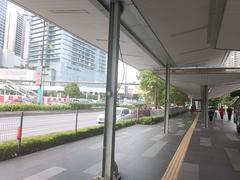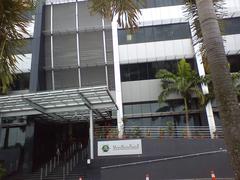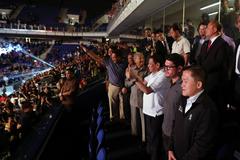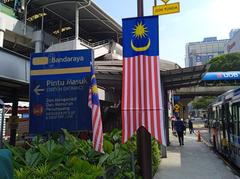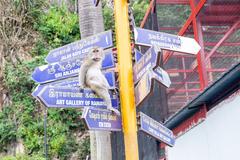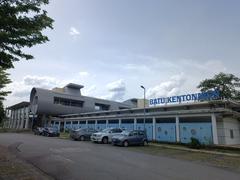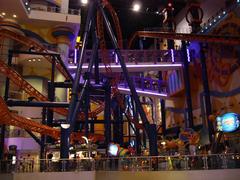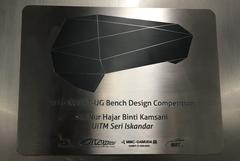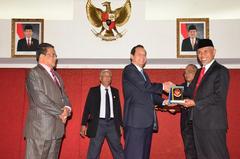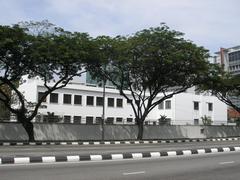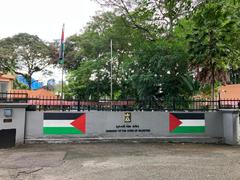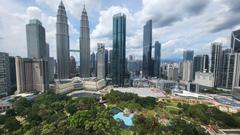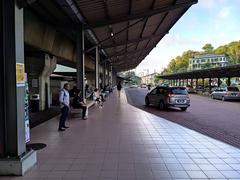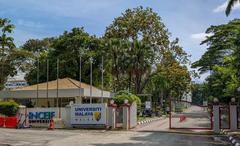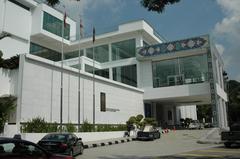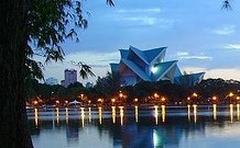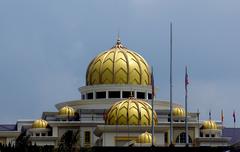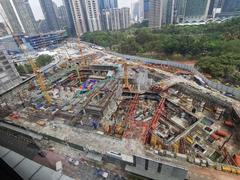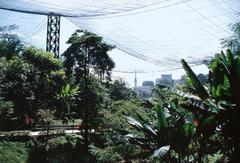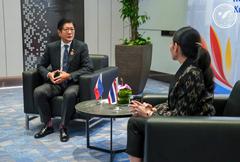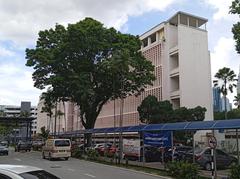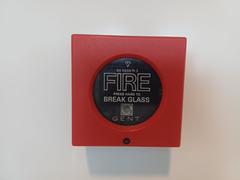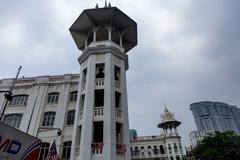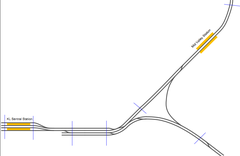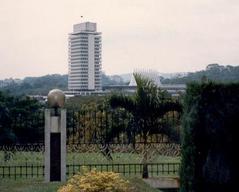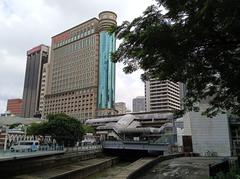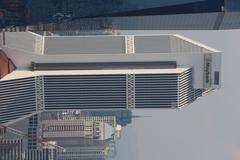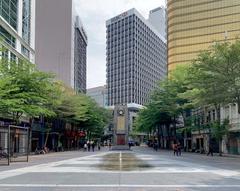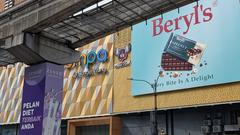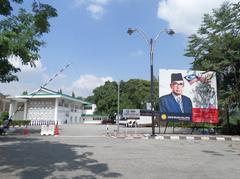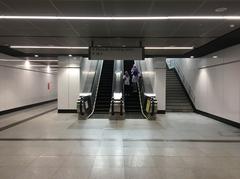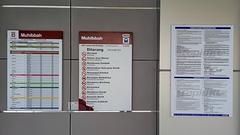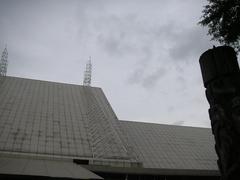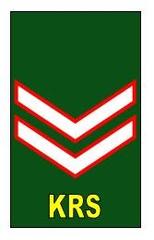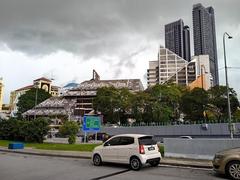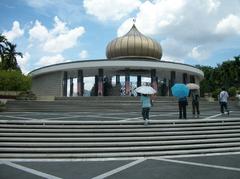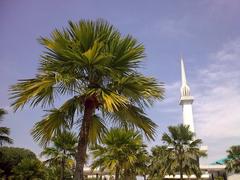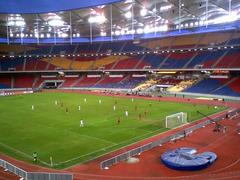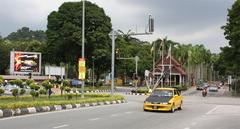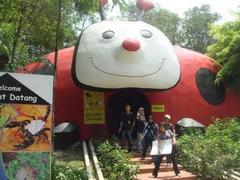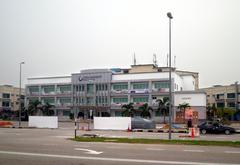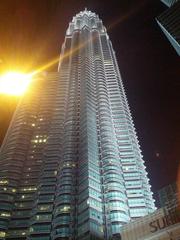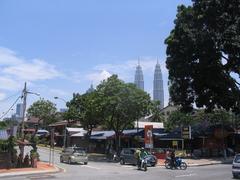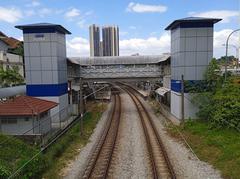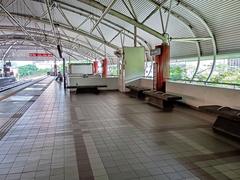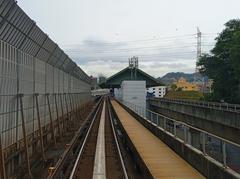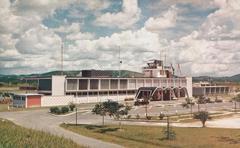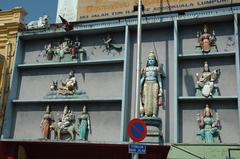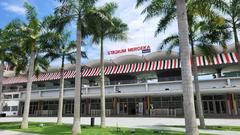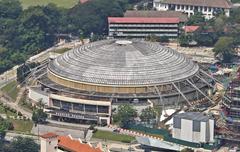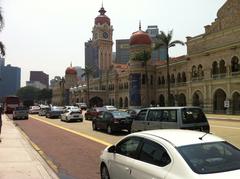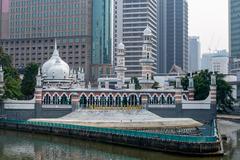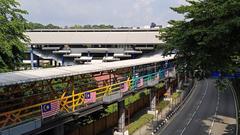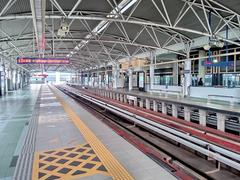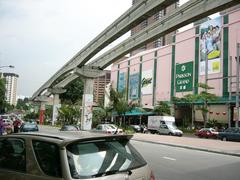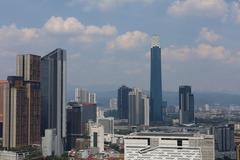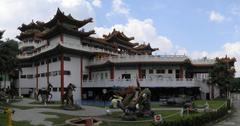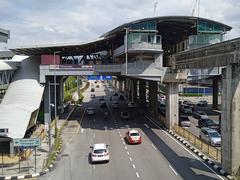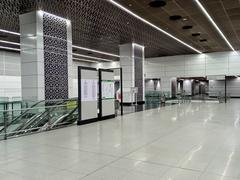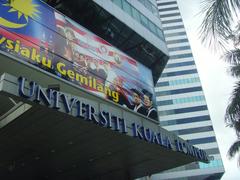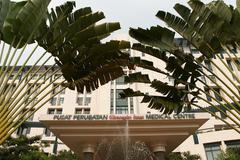
Dayabumi Complex Kuala Lumpur: Visiting Hours, Tickets, and Historical Sites Guide
Date: 03/07/2025
Introduction
Rising above Jalan Sultan Hishamuddin in the heart of Kuala Lumpur, the Dayabumi Complex stands as a testament to Malaysia’s architectural ambition and rich cultural heritage. Since its completion in 1984, this iconic skyscraper has not only transformed the city skyline but also blends modern Islamic architectural motifs with Kuala Lumpur’s legacy as a colonial mining town. Set on a site once home to the Malayan Railway workshops, Dayabumi Complex today is a vibrant commercial and cultural hub, offering visitors an immersive experience in the city’s past, present, and future (Wikipedia; Histofreak).
Whether you are an architecture enthusiast, history buff, or urban explorer, this guide details everything you need to know about visiting Dayabumi Complex—including its history, cultural significance, visiting hours, ticket information, accessibility, and nearby attractions.
Historical Background and Architectural Significance
Origins and Urban Renewal
The Dayabumi Complex occupies a site crucial to Kuala Lumpur’s colonial history, where the Malayan Railway workshops operated until 1981. Its redevelopment, initiated by the Urban Development Authority (UDA) in the late 1970s, marked Kuala Lumpur’s transformation into a modern metropolis. Construction began in 1982 and the complex was officially launched in 1984 by Prime Minister Tun Dr. Mahathir Mohamad (Wikipedia; Histofreak).
Design and Symbolism
Standing at 157 meters with 35 storeys, Dayabumi Complex was one of Malaysia’s first skyscrapers (Holidify). The building’s design by Arkitek MAA and BEP Akitek, with landscape design by Peter Verity, is a pioneering example of modern Islamic architecture. It features an elegant white marble façade, intricate fretwork (mashrabiya) screens, and eight-pointed star motifs. The intersecting geometric forms and arches symbolize unity and Malaysia’s multicultural identity (Asia for Visitors).
Essential Visitor Information
Visiting Hours
- General Hours: Monday to Saturday, 9:00 AM – 6:00 PM
- Closed: Sundays and public holidays
- Note: Individual offices and retail spaces may have varied timings; check ahead for special events or exhibitions (EdgeProp).
Tickets and Entry
- Public Areas: Free entry
- Exhibitions/Special Events: May require advance booking or tickets; refer to the official website for updates
- Guided Tours: Occasional special tours can be arranged via official channels or local operators
Accessibility
- Mobility: Wheelchair accessible, with elevators and ramps throughout
- Public Transport: A short walk from Pasar Seni LRT and MRT stations; connected by covered walkways (GoKL)
- Parking: Onsite parking is available, but public transport is recommended during peak hours
Architectural Highlights
- Façade: White marble cladding with delicate fretwork, reflecting sunlight and reducing heat gain
- Tower Shape: The main tower’s form is a four-pointed star intersected by a square, a nod to Islamic geometric symbolism
- Public Spaces: Landscaped podium and forecourts enhance comfort in the tropical climate
- Interior: Houses government agencies, commercial offices, and the headquarters of POS Malaysia, with the City Point retail center for shopping and dining (GoKL; KLCC White Beacon of Pride PDF)
Visitor Experience and Things to Do
Retail, Dining & Events
- City Point Shopping Centre: Offers retail outlets and eateries for refreshments and shopping
- Cultural Events: Occasional exhibitions, performances, and public events are held in the complex
- Photography: The building’s Islamic motifs and skyline views make it a favorite for photographers, especially at sunrise and sunset (Omeeyo)
Recommended Photo Spots
- The footbridge from Central Market for views of the star-shaped tower
- The landscaped podium for close-ups of the marble and fretwork
Nearby Attractions
- Central Market (Pasar Seni): Art deco market with crafts and food (GoKL)
- National Mosque (Masjid Negara): Modern Islamic architecture, open to visitors outside prayer times
- Old Kuala Lumpur Railway Station: Moorish-influenced masterpiece for history and photography enthusiasts
- Petaling Street (Chinatown): Bustling with street food and shopping
- Merdeka Square: Site of Malaysia’s independence declaration
All are within walking distance, making Dayabumi an ideal base for cultural exploration.
Sustainability, Refurbishments, and Future Prospects
Dayabumi Complex has undergone significant refurbishments aimed at sustainability, including energy-efficient lighting, upgraded facilities, and plans for solar integration (EdgeProp). Future development will further integrate the complex with the riverside and surrounding cityscape, expanding its retail and hospitality offerings.
Practical Tips for Visitors
- Recommended Visit Duration: 1–2 hours, or longer if exploring nearby sites
- Best Time to Visit: Weekdays, mornings, or late afternoons for pleasant weather and good lighting
- Dress Code: Modest clothing is recommended; comfortable shoes are ideal for walking
- Language: English and Malay signage are prevalent
- Safety: The area is safe, but standard urban precautions apply
Accessibility and Visitor Services
- Facilities: Modern restrooms, accessible entrances, and elevators throughout the complex (KLCC White Beacon of Pride PDF)
- Family Friendly: Open spaces and nearby child-friendly attractions
- Information: Security and reception staff can assist with basic queries
Frequently Asked Questions (FAQ)
Q: What are the Dayabumi Complex visiting hours?
A: Monday to Saturday, 9:00 AM – 6:00 PM; closed Sundays and public holidays.
Q: Is there an entrance fee?
A: No, entry to public areas is free.
Q: Are guided tours available?
A: Not regularly, but special tours may be arranged via official channels.
Q: How can I get there?
A: Via Pasar Seni LRT/MRT or walking from nearby attractions.
Q: Is Dayabumi Complex accessible for people with disabilities?
A: Yes, it features wheelchair-accessible entrances, ramps, and elevators.
Visuals and Interactive Media
- Virtual Tours: Available on official tourism websites and Kompleks Dayabumi Official Site
- Photo Galleries: Look for images tagged with “Dayabumi Complex Kuala Lumpur Islamic architecture”
- Alt Text Tips: Use keywords like “Dayabumi Complex visiting hours,” “Islamic architecture Kuala Lumpur,” and “Kompleks Dayabumi skyline”
Summary and Why You Should Visit
The Dayabumi Complex is both a landmark of Malaysia’s architectural innovation and a living symbol of its cultural pride. Its fusion of Islamic motifs and modern design creates a unique urban experience, enhanced by its strategic location among Kuala Lumpur’s most treasured historical sites. Ongoing enhancements and sustainable initiatives ensure Dayabumi remains accessible and welcoming for all visitors (Wikipedia; EdgeProp; Holidify; Omeeyo).
To maximize your visit, explore nearby attractions on foot, take advantage of the city’s public transport, and enjoy the blend of history and modernity that Dayabumi offers. For real-time updates and guided tours, consider downloading the Audiala app and consulting official tourism websites.
Useful Links and References
- Dayabumi Complex Wikipedia
- Kuala Lumpur History: Transformation of Mining Town to Modern Metropolis, Histofreak
- Dayabumi Complex - Kuala Lumpur Sightseeing, Holidify
- Kompleks Dayabumi Kuala Lumpur, Asia for Visitors
- Dayabumi Future Developments, EdgeProp
- Dayabumi Complex Overview, Touristlink
- Dayabumi Complex Sightseeing Guide, Omeeyo
- Dayabumi Complex Visitor Info, GoKL
- Official Kuala Lumpur Tourism Website
- Kompleks Dayabumi Official Website
- KLCC White Beacon of Pride PDF
Plan your visit to the Dayabumi Complex today—where Malaysia’s history, culture, and modernity converge. For the latest updates, consult the official websites, download the Audiala app, and follow us on social media.








